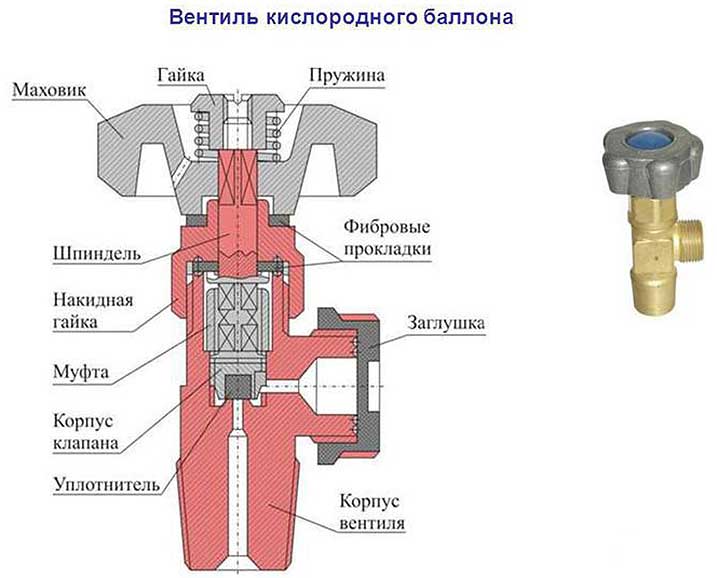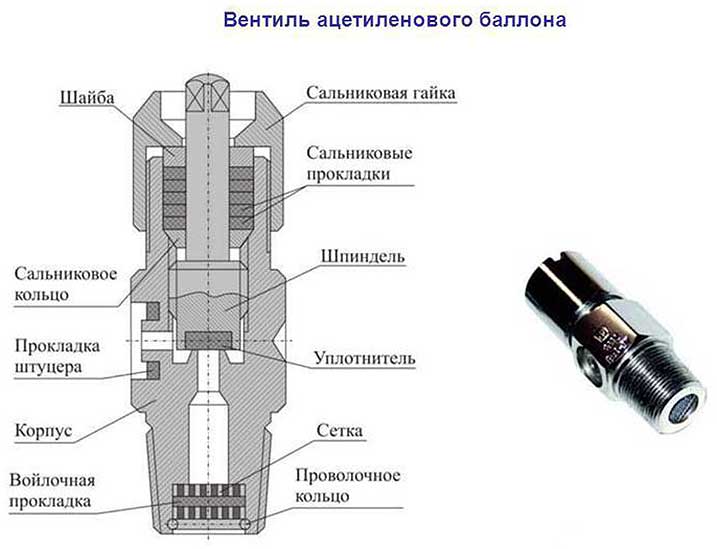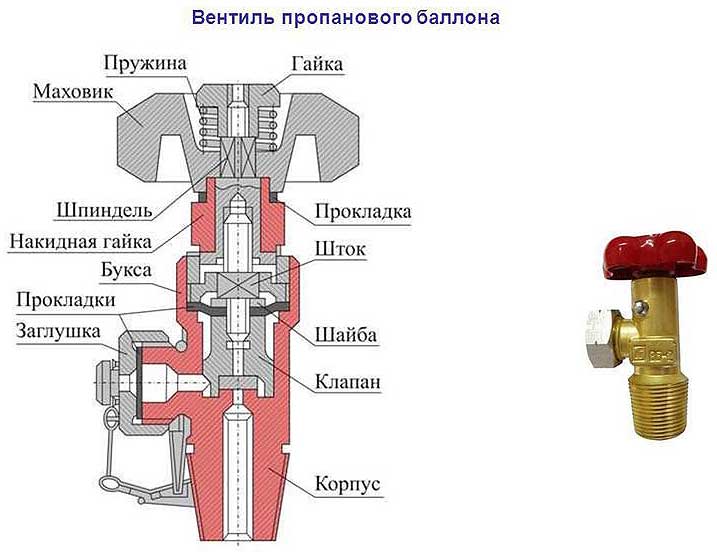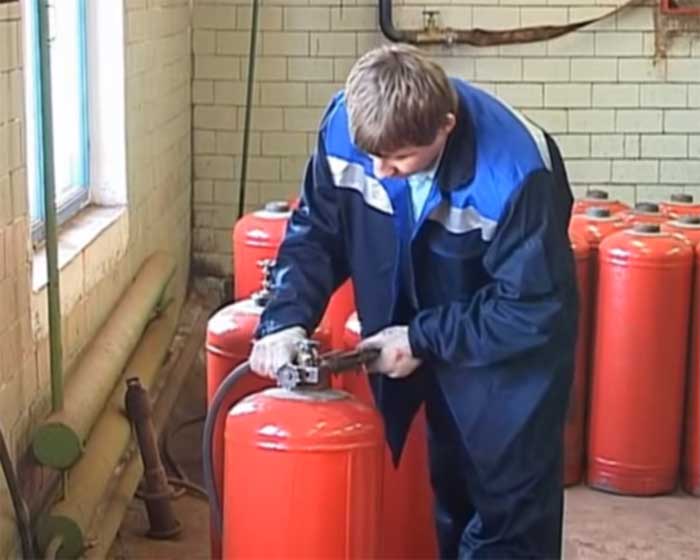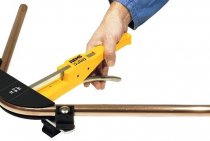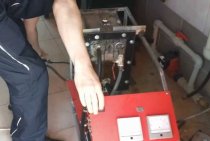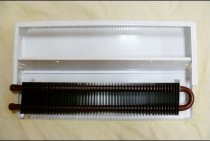The device of valves and their varieties
A valve is a device responsible for the inlet and outlet of gas.
- balloon valves;
- ramp valves.
Additionally, they are distinguished by the type of connecting thread and the method of sealing.
Main difference by type of gas
- oxygen valve.
- acetylene valve.
- Propane butane valve.
Oxygen valve device
- Case material – brass.
- The material of the elements is plastic, steel and aluminum alloys.
Valve composition:
- housing with right-hand thread fitting;
- oxygen reducer with union nut;
- inside the body is a valve with a seal;
- clamping union nut for fiber pad;
- a handwheel with a handwheel nut and a spring for the spindle, designed to supply and shut off oxygen;
- valve plug;
- coupling;
All parts of the valve must be degreased to avoid clogging of the valve channels.
Acetylene valve device
The acetylene valve is made of steel with a copper content of not more than 70%. Due to chemical reactions, copper content of more than 70% is prohibited.
The composition of the acetylene valve:
- frame;
- reducer with a connecting collar;
- spindle;
- ebonite seal - valve;
- epiploon in the form of a leather ring;
- gland nut with washer;
- felt pad, it is also a filter with a mesh;
- fixing steel ring;
- leather fitting gasket.
The thread of the acetylene reducer is different from others. This feature prevents installation on other types of cylinders.
Propane butane valve device
Compound:
steel case.
Inside it are:
- rubber stocking nipple;
- spindle;
- propane tank valve.
How to replace the valve yourself?
Self-replacement of the valve is prohibited by unspoken rules. To carry out this operation, safety precautions must be observed. Gas will not allow careless treatment. Therefore, safety precautions must be observed. It is forbidden to suddenly release gas. Carry out work near open flames. All operations should be carried out in a room that is well ventilated.
Valve replacement
- the valve gently heats up for better twisting out of the cylinder;
- fitting preparation, sealing with fluoroplastic tape or other sealant;
- at the final stage, a new valve is screwed in, controlling the tightening force;
- the date of replacement of the valve is recorded in the passport of the cylinder.
Gas leakage is checked with soapy foam, which is applied to the valve connections.
Why repair a gas cylinder
Repair of a gas cylinder is a popular service for bottled gas users. Repairing a cylinder is cheaper than buying a new container.
Gas cylinder device:
- cylindrical body with upper and lower bottom;
- valve screwed into the cylinder body;
- a cap that protects the valve from mechanical damage;
- neck ring, a cap is screwed onto it;
- pressure stabilization reducer;
- shoe, holds the cylinder in a vertical position.
Valve device:
- valve body;
- locking mechanism;
- flywheel.
There are breakdowns that are forbidden to be repaired for safety reasons. In such situations, the broken cylinder is scrapped or exchanged for a new or repaired one.
Everyone who, due to professional or domestic necessity, deals with gas equipment, needs to know in what cases it is necessary to repair a gas cylinder. The use of various gases has become widespread in all areas of the national economy - in industry, construction, agriculture and everyday life. Therefore, an important aspect of observing safety precautions and maintaining the health of employees and the public is knowing the signs of gas cylinder failure.All types of faults can be divided into recoverable and unrecoverable. In case of detection of correctable faults, the cylinder must be repaired. In the presence of fatal malfunctions, the cylinder should be disposed of in compliance with all safety measures.
Fixable faults include:
- visible damage to the valve and cylinder pressure gauge, incorrect operation of these devices;
- change in the position of the "shoe" or its damage;
- wear or damage to the thread on the neck of the cylinder;
- if you suspect a gas leak from the cylinder;
- if the color of the balloon is significantly damaged.
Fatal malfunctions that make further operation impossible are considered to be significant damage to the surface of the cylinder - cracks, dents, chips, cracks in the weld, swelling, as well as the irretrievable loss of marking and passport data.
The final decision regarding the damaged cylinder is taken by a qualified specialist after inspection.
